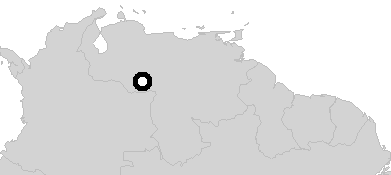
| www.CuriousTaxonomy.net |
|
The Flood in World Myth and Folklore
Northern South America |
| © 2021 Mark Isaak |

When the world was being created, Ichiaí had all the mosquitoes in a gourd, planning to throw them far away. A Yaruro asked what he had.
"My children," Ichiaí replied, "and you will not get to see them."
"May I have just a peek?"
"No, I am off to throw them on the other side of the ocean."
"Please let me see. It makes such a pleasant noise."
He was so insitent that Ichiaí opened the gourd. The mosquitoes swarmed out and covered the man, who jumped into a lake trying to escape. "Become a capybara," Ichiaí said, "that the children of the future may eat you."
The flood destroyed all the first people, and the world had to be created anew. The howler monkeys are our ancestors. When the flood waters washed them away, they climbed into the trees. Others went to a huge sand dune. They was danger from big fish falling from the sky, and it was very cold. Those on the dune suffered terribly from hunger. The people's singer, though unbearably cold, began to chant, and the others joined in. When they had sung enough, the waters receded.
Johannes Wilbert and Karin Simoneau, eds., Folk Literature of the Yaruro Indians (Los Angeles: UCLA Latin American Center Publications, 1990), 76-77.

The first people neglected Kuma the creator, so she made it rain until only one sand dune and one tree stayed above water. People escaped into the tree, but there were only leaves and rotten fruit to eat, and when people sat with their bottoms towards the water, a big fish would come by and bite them. A few of these people survived as humans, but Kuma turned the ones that ate leaves and rotten fruit into howler monkeys.
Brusca, María Cristina & Tona Wilson, When Jaguars Ate the Moon, and Other Stories About Animals and Plants of the Americas (New York, Holt, 1995), p. "M".
